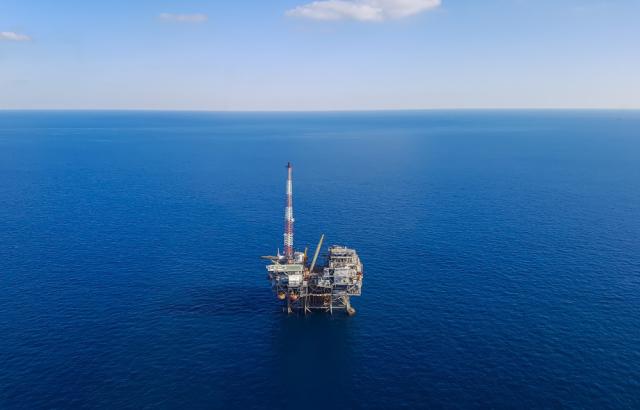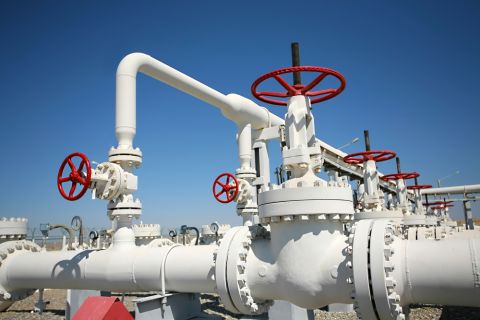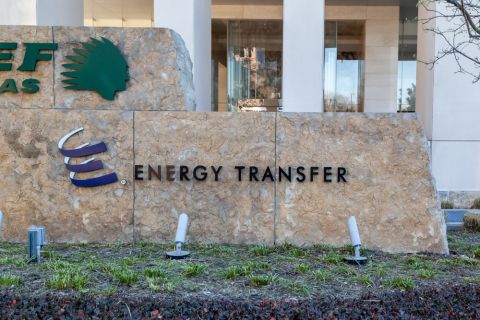
Of the 71 blocks with bids, 53 had water depths of at least 800 m, according to the preliminary statistics from the U.S. Bureau of Ocean Energy Management. (Source: Shutterstock.com)
Focused on the long-term potential of offshore oil and gas development as today’s market faces unprecedented headwinds, offshore players placed a combined $93 million in high bids on blocks in the U.S. Gulf of Mexico.
The March 18 lease sale, which was scheduled in late 2019, came amid a market collapse that has seen a growing list of oil and gas companies chop capital budgets for the year. Facing uncertainty brought by the coronavirus pandemic and oil price war sparked by OPEC+ alliance breakup, companies participating in the sale had until 10 a.m. March 17—the day before the sale—to withdraw bids previously placed.
But none had, Mike Celata, director of the U.S. Bureau of Ocean Energy Management (BOEM), said during a media call following the sale. Preliminary sale statistics provided by BOEM showed 22 companies participated in the sale, placing 84 bids on just 71 of the nearly 14,600 blocks available across the GoM region.
Familiar players like BP, Chevron, Shell and BHP Billiton were among the bidders.
The number of participants is down from the 30 companies that participated in the March 2019 lease sale, which brought in more than $244 million in high bids on 227 blocks. Back then, oil prices were hovering around $60 per barrel, compared to less than half that today.
“While bidding did take a tough hit, it could have been substantially worse due to the unprecedented near-term financial constraints created by the COVID-19 virus and the oil price war between Saudi Arabia and Russia,” National Ocean Industries Association President Erik Milito said in statement. “Long-term projections for energy demand, including oil and natural gas, show strong growth for the foreseeable future. Offshore projects are undertaken with the long-term outlook in mind.”
Celata admitted he didn’t know what to expect going into the sale, given what has happened in the last couple of weeks.
“But I’m pleased with the dollars bid per acre. I think that’s a fair assessment of the sale, and I think that bodes well for this sale and then future sales,” he said, which he said averaged around $234 but was $251 per acre for deep water—“the driving force of all these lease sales.” It was the highest since August 2017. “So, from that aspect, dollars per acre, we did fairly well.”
Overall, that was not the case.
The $93 million in high bids for the sale, the first of two federal offshore oil and gas lease sales scheduled for 2020, was the lowest since 2016, Reuters reported.
Before the latest market crash, the August 2019 lease sale results added to renewed optimism offshore. That sale garnered $159.4 million in high bids.
Despite the market ups and downs, interest remains in the GoM with several multimillion-dollar bids placed by offshore players as evidence. Topping the list of high bids on a single block was BHP Billiton Petroleum Deepwater Inc., which bid about $11 million for Green Canyon Block 80.
Another block in the area received a $5 million bid.
“Those were both newly available blocks and they were offset to Green Canyon 124, which was the high bid in the last sale,” Celata added, pointing out the possible pursuit of Miocene-aged reservoirs in fairly large structures in the area. “All this bidding was by BHP. So, there’s still prospects out there that operators are interested in acquiring.”
Commenting on the sale in a statement, Mfon Usoro, senior research analyst with Wood Mackenzie’s GoM upstream team, said “BHP also bid on a cluster of blocks in Alaminos Canyon to bolt onto its existing acreage in the region where it is currently evaluating results of the Ocean Bottom Node seismic.”
The top five companies in terms of sum of high bids were:
• Chevron USA Inc., 15 bids totaling about $24.7 million;
• BHP Billiton Petroleum (Deepwater) Inc., six bids totaling about $20 million;
• Shell Offshore Inc., seven bids totaling about $18.4 million;
• BP Exploration & Production Inc., 16 bids totaling about $10.4 million; and
• EnVen Energy Ventures LLC, two bids totaling about $4 million.
Usoro pointed out that majors accounted for more than 60% of the high bid amount with competition seen between Shell, Chevron, BP and Total for recently-expired blocks in Green Canyon and Garden Banks.
“A notable block was [Garden Banks] 963, a stone’s throw from Total’s North Platte project, which expired in October 2019,” Wood Mackenzie said in a statement. “Total and Shell went toe to toe on that block, with Total winning it with a US$1 million bid, a fraction of the $22 million that was paid to pick up the block in 2012.”
Blocks near existing infrastructure also continued to attract bidders as tiebacks and infrastructure-led exploration continue to make offshore more economic for oil and gas companies.
Of areas receiving bids, interest appeared the greatest in the Green Canyon blocks, and deepwater continued to reign. Of the 71 blocks with bids, 53 had water depths of at least 800 m, according to the preliminary statistics.
In all, participating companies placed about $108.6 million in bids.
“We should also remember that lease sales are just the start of the offshore investment window,” Milito said. “Companies will spend millions of dollars exploring, evaluating and, hopefully, producing from many of today’s lease blocks. NOIA member companies remain committed to providing energy security, economic growth and a high standard of living through American offshore energy production.”
The next GoM lease sale is proposed for the summer. If held, it will mark the seventh sale of the 2017-2022 Outer Continental Shelf Oil and Gas Leasing Program.
“We think more lease sales are still in the cards, but higher oil prices will be required for bid amounts to climb back to historical norms,” Usoro added. “Otherwise this sale result will continue with even lower bidding activity.”
BOEM estimates the GoM Outer Continental Shelf contains about 48 billion barrels and 141 trillion cubic feet of undiscovered technically recoverable oil and gas resources.
Recommended Reading
Wayangankar: Golden Era for US Natural Gas Storage – Version 2.0
2024-04-19 - While the current resurgence in gas storage is reminiscent of the 2000s —an era that saw ~400 Bcf of storage capacity additions — the market drivers providing the tailwinds today are drastically different from that cycle.
Ozark Gas Transmission’s Pipeline Supply Access Project in Service
2024-04-18 - Black Bear Transmission’s subsidiary Ozark Gas Transmission placed its supply access project in service on April 8, providing increased gas supply reliability for Ozark shippers.
Kinder Morgan Sees Need for Another Permian NatGas Pipeline
2024-04-18 - Negative prices, tight capacity and upcoming demand are driving natural gas leaders at Kinder Morgan to think about more takeaway capacity.
Scathing Court Ruling Hits Energy Transfer’s Louisiana Legal Disputes
2024-04-17 - A recent Energy Transfer filing with FERC may signal a change in strategy, an analyst says.
Balticconnector Gas Pipeline Will be in Commercial Use Again April 22, Gasgrid Says
2024-04-17 - The Balticconnector subsea gas link between Estonia and Finland was damaged in October along with three telecoms cables.





